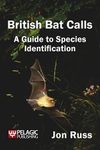About this book
This ground-breaking volume covers 42 species of terrestrial mammals – from the red deer to the pygmy shrew, from the pine marten to the hedgehog. The subject is introduced for the first time as a single overarching field of study, including guidance on survey methods, analysis of sound recordings and appropriate software. The book covers species in Britain, Ireland, the Isle of Man and the Channel Islands.
Containing nearly 300 figures in total, each species is considered in detail, with specific spectrogram examples. Furthermore, the book allows the reader access to a downloadable sound library containing more than 250 recordings.
The authors have extensive experience and expertise in bioacoustics, including in the sound identification of mammals. They are also heavily involved in creating tools that use machine-learning algorithms to recognise mammal species from their calls. A real ear-opener, this will be the essential handbook for many years to come, serving ecological consultants, academics, conservationists, hobbyists and serious mammal recorders alike.
Read the interview with Neil Middleton about this book: Interview
Contents
Foreword
Preface
Acknowledgements
About the Authors
Preamble
About the Sound Library
1. Introduction & Context
2. Survey Equipment & Field Techniques
3. Analysis of Acoustic Recordings
4. Overview of the Species Group-specific Chapters
5. Even-toed Ungulates – Deer & Wild Boar
6. Carnivores (Including Mustelids)
7. Lagomorphs – Hares & Rabbits
8. Rodents – Squirrels & Beavers
9. Rodents – Rats, Mice, Voles & Dormice
10. Insectivores – Hedgehogs, Moles & Shrews
Appendix I – Glossary
Appendix II – Case Studies
References
Index
Customer Reviews
Biography
Neil Middleton is a licensed bat worker and trainer and is the owner of BatAbility Courses & Tuition, an organisation that delivers ecology-related skills development to customers throughout the UK and beyond. He has a constant appetite for self-development, as well as seeking to develop those around him, and to this end he has designed and delivered in excess of 400 training events covering a wide range of business and ecology-related subjects. Neil has had a strong interest in the natural world since childhood, particularly in relation to birds and mammals. He has studied bats for over 25 years, with a particular focus on their acoustic behaviour (echolocation and social calls). He previously authored Social Calls of the Bats of Britain and Ireland (2nd Edition, 2022), Is That a Bat? A Guide to Non-Bat Sounds Encountered During Bat Surveys (2020), and The Effective Ecologist: Succeed in the Office Environment (2016).
Stuart Newson is a Senior Research Ecologist at the British Trust for Ornithology, where he is involved in survey design and data analysis from national ‘citizen-science’ surveys. While birds have been the core of his work, Stuart has an interest in bats and acoustic monitoring – in particular, how technology can deliver opportunities for conservation and provide ways to engage with large audiences. Stuart’s work on bioacoustics has included creating tools to identify European bats, bush crickets and small mammal species from their ‘calls’. This resulted in the BTO Acoustic Pipeline, which integrates online tools for coordinating fieldworkers, processing recordings, and returning feedback to encourage large-scale participation in acoustic surveys. Stuart is also a member of Natural England’s Bat Expert Panel.
Huma Pearce is a freelance ecologist with a specialist interest in mammals. She has worked on various small and medium-sized mammal monitoring projects in the UK and abroad, training students and citizen science volunteers in mammal survey techniques. She developed an interest in bats in 2005, which sparked an interest in sound analysis for species identification and behavioural studies. Huma has since contributed to sound libraries (e.g. BTO Acoustic Pipeline) and has become an advocate for the application of bioacoustics for monitoring bats and other mammals. As such, Huma is never far away from either a recording device, a new site to explore, or the analysis of megabytes of data from previously deployed sessions.














































